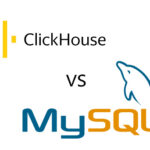How to Boost Query Performance with Golang, Fiber, MySQL, and DuckDB
To combine MySQL and DuckDB in Golang for improved query performance, consider using a hybrid query execution approach. This method leverages MySQL’s strong transactional management and DuckDB’s lightning-fast analytical processing capabilities. Here’s how to make the most of both:
1. Use MySQL for Transactions, DuckDB for Analytics
- MySQL should handle regular
INSERT,UPDATE, andDELETEoperations for transaction-heavy workloads. - DuckDB is ideal for complex analytical queries that involve large datasets, such as aggregations and filtering. Implementation:
- Periodically or on-demand, dump MySQL data into DuckDB for analysis.
- Perform analytical queries on DuckDB while maintaining transactional queries on MySQL.
2. Cache Temporary Data in DuckDB
- For queries that are repeatedly executed with static data (e.g., reports or dashboards), cache the MySQL results in DuckDB to speed up subsequent queries.
- When MySQL data changes, refresh the cached data in DuckDB.
3. Partitioning Data for Better Performance
- If the MySQL dataset is large, partition the data by time or other criteria. Then, only dump the necessary partitions into DuckDB to avoid querying the entire dataset.
4. Parallel Query Execution
- Use Golang’s goroutines to execute MySQL and DuckDB queries in parallel. For example, one goroutine can query MySQL while another performs analysis on DuckDB.
- Combine this with Fiber to efficiently manage HTTP requests/responses.
5. Query Transfer to DuckDB in Golang
- Use an ORM like GORM for MySQL while directly querying DuckDB. Write functions to check if a query is more analytical, then route it to DuckDB for faster processing.
db, err := sql.Open("duckdb", "path_to_duckdb.db")
if err != nil {
log.Fatal(err)
}
defer db.Close()
rows, err := db.Query("SELECT * FROM table WHERE ...")6. Optimized Indexing
- Optimize indexing in MySQL for transactional queries. DuckDB doesn’t rely on heavy indexing and is inherently optimized for analytical workloads.
7. Seamless Integration with Fiber
Combine MySQL and DuckDB efficiently with Fiber to build a high-performance API:
app := fiber.New()
app.Get("/query", func(c *fiber.Ctx) error {
db, err := sql.Open("mysql", "user:password@/dbname")
if err != nil {
return err
}
// Query MySQL or DuckDB based on conditions
return c.SendString("Query results")
})
app.Listen(":3000")Advantages of Combining MySQL and DuckDB:
- High-speed analytics: DuckDB is optimized for in-memory, columnar storage, making it ideal for analytical queries.
- Lower latency: When large datasets are processed, DuckDB significantly reduces the time needed for complex operations.
- Flexible data storage: Use MySQL for structured, transactional data while offloading analytical workloads to DuckDB for faster insights.
- Efficient resource use: With DuckDB’s ability to handle analytical workloads in-memory, you avoid the overhead of I/O operations seen in traditional databases.
- Easy to scale: DuckDB’s lightweight design allows it to handle larger datasets without the need for expensive hardware upgrades.
By combining MySQL for transactions and DuckDB for analytics, you can optimize your application’s query performance and provide faster, more efficient data processing.







Leave a Reply